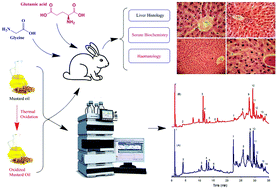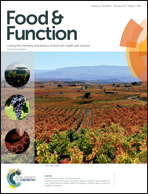Protective effects of dietary glycine and glutamic acid toward the toxic effects of oxidized mustard oil in rabbits
Abstract
The protective role of glycine and glutamic acid against the toxic effects of oxidized oil was studied for the first time. Mustard seed oil was thermally oxidized and characterized for quality characteristics and polyphenolic composition using reversed phase HPLC-DAD. Significant changes in the quality characteristics occurred with thermal oxidation. Fourteen polyphenolic compounds were identified and quantified in oils. Quercetin-3-glucoside, quercetin-3-feruloylsophoroside, catechin, quercetin-3-rutinoside, quercetin-3,7-diglucoside, sinapic acid and vanillic acid hexoside were the major compounds in the fresh and oxidized oil. Oxidized, un-oxidized mustard oils, glycine and glutamic acid were given to rabbits alone or in combination. The biochemical responses were studied in terms of haematological and biochemical parameters and histopathology. It has been observed that biochemical and haematological parameters were adversely affected by the oxidized oil, while supplementation of both amino acids was beneficial in normalizing these parameters. Both amino acids alone have no significant effects, however, oxidized oil affected the liver by enhancing fat accumulation, causing hepatitis, reactive Kupffer cells and necrosis. The co-administration of oxidized oils with glycine or glutamic acid revealed significant recovery of the liver structure and function. In conclusion, glycine or glutamic acid is beneficial and protective against food toxicity and can be considered as an ameliorative food supplement.



 Please wait while we load your content...
Please wait while we load your content...